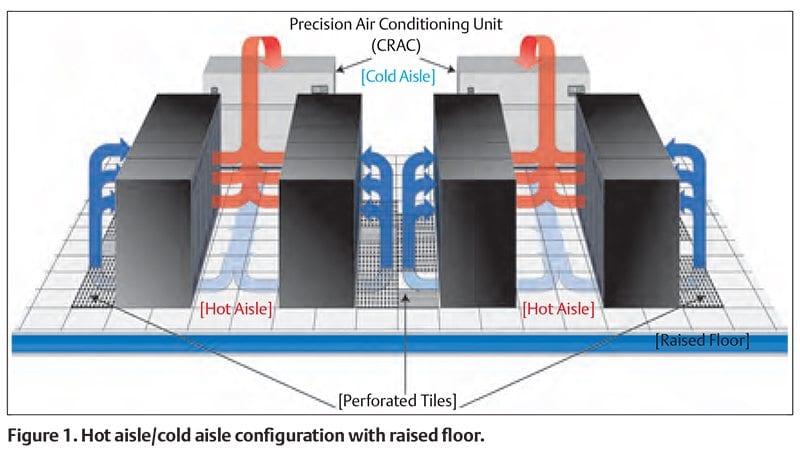4 Steps to Better Data Center Cooling
Cost savings and carbon footprint reduction can sometimes seem like opposing goals. But there’s one place where the two go hand-in-hand: the data center.
According to the Uptime Institute, data centers are responsible for as much as 35 percent of total energy use in non-manufacturing, information-intensive companies. But despite the data center’s heavy power load there is a great opportunity to save money through more effective energy management.
As both energy prices and data center energy demands rise, efficient cooling will continue to be important. Fortunately, by incorporating best practices you can improve your current data center’s cooling efficiency and position it for future success.
Step 1: Seal Your Data Center Properly
Proper data center sealing is essential—it’s the foundation upon which the rest of your cooling efficiency plan must be built. Inconsistent data center sealing can result in cooling losses and the introduction of humidity, both reducing cooling efficiency. To seal your data center:
- Keep doors closed at all times.
- Create a vapor seal using a combination of plastic film, vapor-retardant paint, vinyl wall coverings and vinyl floor systems. A vapor seal is one of the least expensive methods for controlling the data center environment.
- Seal holes around piping and cables entering the data center through walls and raised flooring.
- Consider a data center assessment to identify and resolve improperly sealed areas.
Step 2: Set up a “Hot-Aisle/Cold-Aisle” System

A hot-aisle/cold-aisle system positions racks in the data center so they are facing one another and drawing air from the cold aisle. Hot air is exhausted through the back of each rack, creating a hot aisle. CRAC units are placed perpendicular to hot aisles which raises return air temperature to each CRAC unit, increasing efficiency.
Step 3: Hot or Cold Aisle Containment
Once you’ve implemented a hot-aisle/cold-aisle arrangement in your data center, the next step is implementing hot or cold aisle containment. Aisle containment prevents hot air mixing with cold between aisles. Hot or cold aisle containment seals the aisle using panels above the aisle and between adjoining racks and installing doors at each end of the aisle. This low-cost method is easy to install, even in raised-floor applications.
Aisle containment increases data center cooling capacity and energy efficiency of the CRAC unit by raising the return air temperature. Increased capacity along with separation of hot and cold air makes it possible to cool higher heat loads per rack. More information on Cold Aisle Containment can be found in the white paper “Focused Cooling Using Cold Aisle Containment”.
Step 4: Intelligent Control
Intelligent control systems like the Liebert DSE high-efficiency cooling system, optimize the operation of each component, minimize energy consumption, and provide diagnostics which integrate with data center management systems. The Libert DSE is up to 70% more efficient than alternative technologies and uses dynamic fan control, compressor modulation, remote rack and supply air sensors to direct energy in your cooling system where it is needed most.
Liebert iCOM with Optimized Aisle Control “decouples” the compressor and fan operation, allowing each to operate independently to match the IT load and airflow requirements. This matching of operation to room requirements results in warmer air returning to the cooling units, allowing units to operate more efficiently, eliminating overcooling of the space and saving energy.
Need Help? That’s Why We’re Here
With the increasing demands data center managers face, energy consumption is a major concern. Utilizing the simple practices outlined in this document can help reduce energy consumption for cooling, helping your company achieve its energy goals.
We work with you to design a plan to reduce energy consumption that is practical for your organization. Most companies can reduce energy consumption with some minor tweaks and small investments in their system. Contact your local Liebert business partner to find a time to make your future a little greener!

